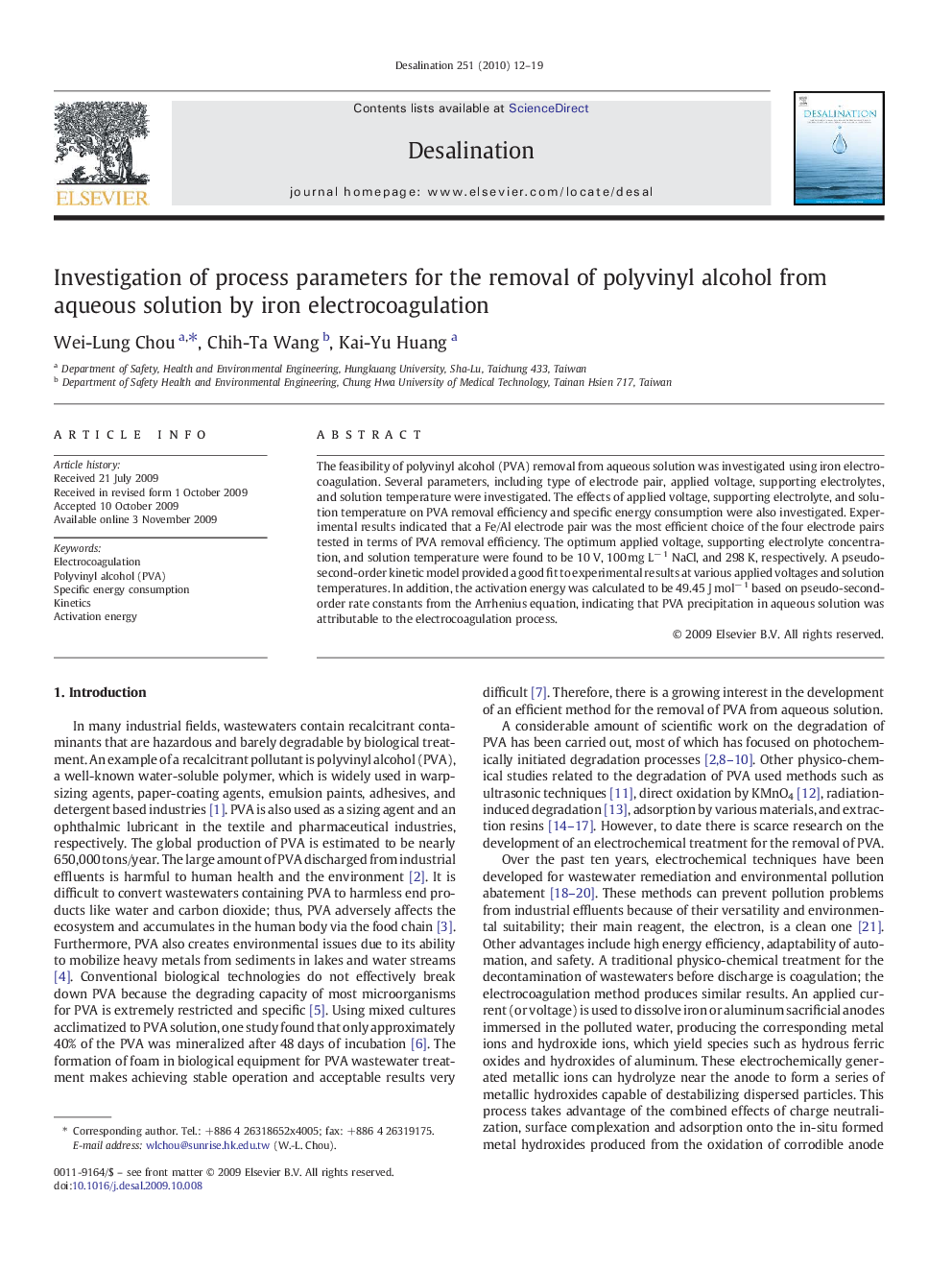| Article ID | Journal | Published Year | Pages | File Type |
|---|---|---|---|---|
| 625881 | Desalination | 2010 | 8 Pages |
The feasibility of polyvinyl alcohol (PVA) removal from aqueous solution was investigated using iron electrocoagulation. Several parameters, including type of electrode pair, applied voltage, supporting electrolytes, and solution temperature were investigated. The effects of applied voltage, supporting electrolyte, and solution temperature on PVA removal efficiency and specific energy consumption were also investigated. Experimental results indicated that a Fe/Al electrode pair was the most efficient choice of the four electrode pairs tested in terms of PVA removal efficiency. The optimum applied voltage, supporting electrolyte concentration, and solution temperature were found to be 10 V, 100 mg L− 1 NaCl, and 298 K, respectively. A pseudo-second-order kinetic model provided a good fit to experimental results at various applied voltages and solution temperatures. In addition, the activation energy was calculated to be 49.45 J mol− 1 based on pseudo-second-order rate constants from the Arrhenius equation, indicating that PVA precipitation in aqueous solution was attributable to the electrocoagulation process.
